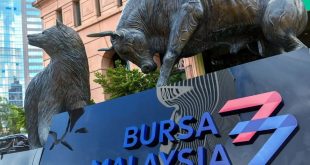More than 180 years of horse racing came to an end in Singapore on Saturday, as the Singapore Turf Club held its final day of racing before returning to the government to provide land for a new home.
Beneath the covered sky, the air-conditioned VIP box is filled with enthusiasts, socialites and tourists, while the garden and the casino are under the care of the people. older generation. The sun came out for the final race, the final of the Grand Singapore Gold Cup.
The winner, South African jockey Muzi Yeni, echoed the sense of loss shared by many that day. “I would like the government to investigate it, if I may say so,” he said in an interview after the race.
More than 120 hectares will be demolished to make way for new public and private housing as the country tries to accommodate a growing population of more than six million people this year. The government said this was necessary to ensure that future generations would have enough land. After some preparatory work, the site will be restored in early 2027. While the decision to end horse racing in the city sent shockwaves through the riding and training community when it was announced last year, the sport was already in decline.
Spectator numbers fell from an average of 11,000 per race day in 2010 to around 6,000 in 2019, before Covid cut attendance by more than half. On Saturday, about 10,000 turned up – a third of the stadium’s capacity.
Young citizens have moved on to other sports and leisure activities. The city’s horse racing is now dominated by the annual Formula One car race, which attracts nearly 270,000 people to its three-day show and spectacle.
Horse racing on the island is already important for land. The Singapore Sting Storing, which Sentish sales William Heliam MacId read, in 1843. This event is the opportunity as expressed the festival. In 1911, the first flight from Singapore, by Belgian pilot Joseph Christiaens, took place over the journey, one of the few flat, open areas available.
Plastic farm
As the city grew and interest in the game increased, the Singapore Turf Club, renamed the Singapore Turf Club, moved to a remote location after purchasing the Bukit Timah Rubber Estate. The new track opened in 1933 and remained in the clubhouse until 1999, when it was remodeled for more recreational use. Don’t reserve it for other places. Horse riding is not the only sport suitable for home expansion. The final 18-hole public golf course closed earlier this year for development. The new Turf Club building was built for S$ 500 (US $ 384 million) as a modern facility, with air conditioning, lighting for night racing and an arena that can seat 30,000 spectators.
“Singapore is a world leader in horse racing and the track is one of the best,” said Tim Fitzsimmons, head coach and head coach of Fitzsimmons Racing, who had more than 50 horses last year and is returned to Australia after arriving in Singapore in 2007. I don’t think it will go back.
Among the thousands who turned out on Saturday, many were retirees who had been coming to the race for decades. Smokers climb a mountain, a woman in a wheelchair chats with her friends in Chinese, bald men sift through tattered newspapers for clues about horses: all gathered for this final race.
It’s a beautiful, beautiful place, but its glory days are gone and it’s too expensive to maintain, said Song Ya Jing, a 77-year-old part-time cook who accompanied her husband for the last gamble. Maybe my children will be able to live in public housing one day.
At the end of the day, a short video montage on the main screen and a light show marked the end of horse racing in Singapore for almost two centuries. Most of the spectators had already left before the sun went down under the 41 light poles.
As the latecomers took pictures between the lost bets, the screen displayed his final message: Thank you.





